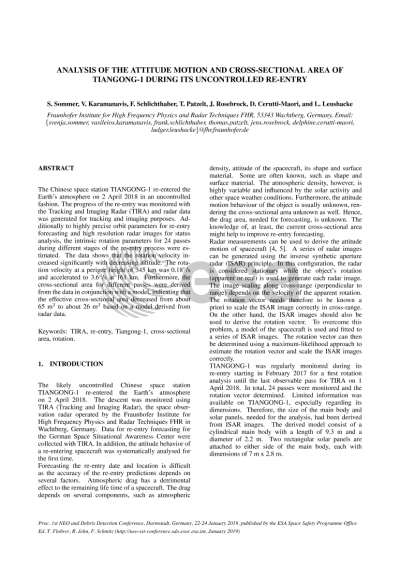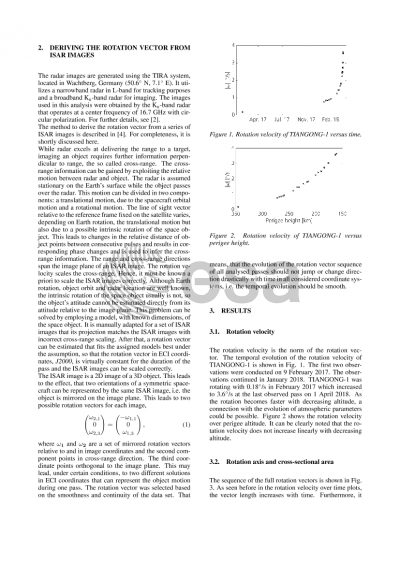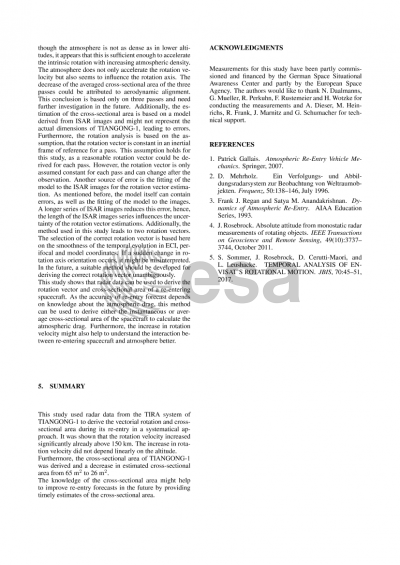Document details

Abstract
The accuracy of satellite re-entry forecasts depends on knowledge about space weather, the atmosphere and the spacecraft itself. A major parameter is the atmospheric drag, which itself depends on one hand on the atmospheric conditions, as well as on the actual cross sectional area and therefore the attitude of the spacecraft. Better knowledge about the cross sectional area could help improving re-entry forecasts.
The Tracking and Imaging Radar (TIRA) located in Wachtberg, Germany, regularly monitors spacecraft that re-enter the Earth’s atmosphere. Independent of daylight and weather conditions, TIRA observations allow not only the determination of highly precise orbit parameters, making use of an L-band tracking radar, but also enable high-resolution inverse synthetic aperture radar (ISAR) imaging using a Ku-band radar. Using a series of ISAR images from one overpass supported by a computer generated 3D model of the spacecraft, its actual integrity as well as its attitude motion can be estimated. This is highly important in the case of uncontrollably re-entering spacecraft.
Recently, the Chinese space station, TIANGONG-1, re-entered the atmosphere and eventually impacted the Pacific Ocean on 2 April 2018. An observation campaign was conducted in collaboration with the German Space Situational Awareness Center and ESA. In total, 24 observations were performed between February 2017 and about 17 hours before the impact. The observations were conducted at altitudes between 350 km and 150 km. The paper will provide a detailed analysis of the rotation velocity, where the results show, amongst others, that the rotation speed steadily increased with decreasing altitude. Furthermore, the data indicate that the rotation axis changed from February 2017 to January 2018, but during the last months before re-entry TIANGONG-1’s rotation axis did not change significantly. Additionally, the paper will present estimations of the cross sectional area of TIANGONG-1 and its temporal behavior during different stages of the re-entry.
Estimates of the attitude motion and derived cross sectional area of a re-entering spacecraft can help to improve future re-entry forecasts and to support active de-orbiting campaigns.
Preview





